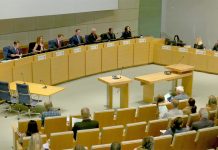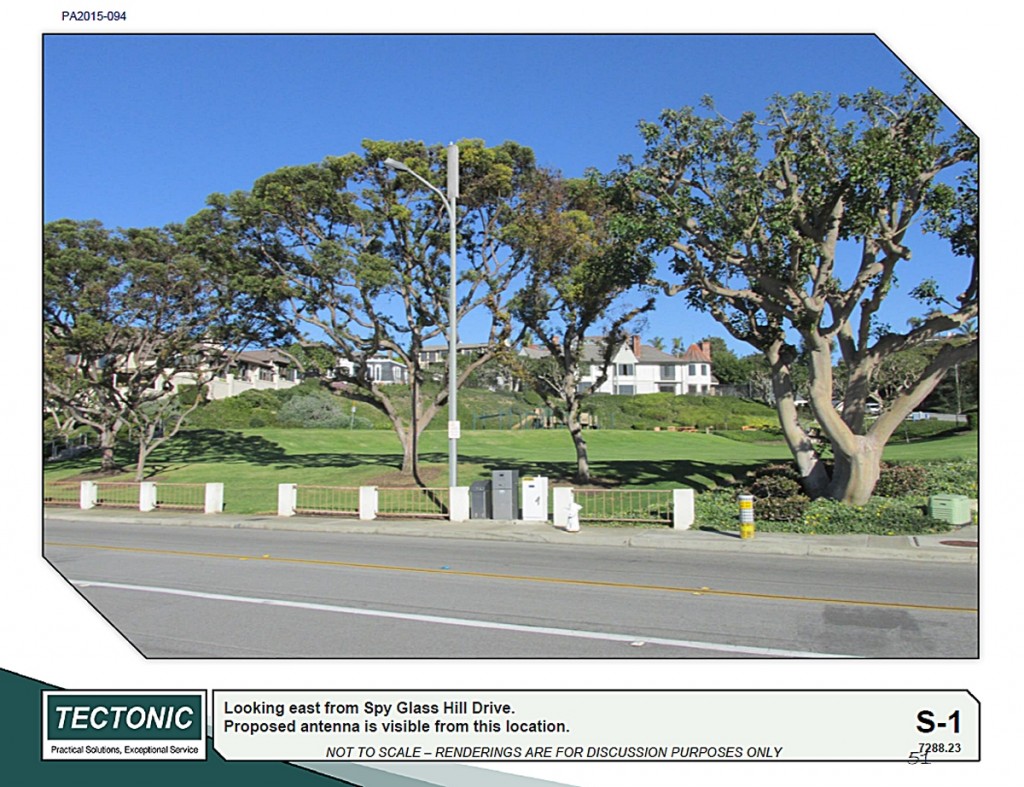
— Courtesy the city of Newport Beach
Spyglass Hill homeowners are applauding a recent decision by Verizon Wireless to withdraw its appeal of a Planning Commission decision to deny a wireless telecommunications facility at Spyglass Hill Park.
After the initial approval in September by the zoning administrator, the Planning Commission denied the facility on Nov. 5 after a group of Spyglass Hill residents appealed the zoning administrator’s decision.
“There were two things that swayed my opinion,” explained Planning Commissioner vice chairman Tim Brown. “One was the number of residents who were opposed to this location and the facts the residents presented to justify their opposition. The Verizon representatives did not adequately dispute those facts in my opinion.”
It’s important for residents who challenge a proposal that is recommended by city staff to do their due diligence and then present their findings in a logical and organized manner, Brown said.
“As a commissioner, I am always swayed more by logic than emotion,” he noted.
Verizon began to appeal the commission’s vote, but recently withdrew it.
The company is no longer pursuing that specific location in Spyglass Hill, Verizon Manager Network Densification Jenny Weaver confirmed, but they are still studying the general area to try and come up with an answer that will work for everybody.
“We are working with the city to find alternative solutions,” Weaver said.
They want to meet the needs of the customers, while also working with residents, she added. The area is in need of better coverage, Weaver noted.
“There is definitely a need for additional wireless data capacity due to customer demand,” she said.
Brown also noted that the tower would have increased capacity.
“I think it is incumbent of Verizon to convince the residents that the tower will increase capacity significantly beyond what we have now. They were unsuccessful in that effort at the Planning Commission hearing,” Brown said.
Spyglass Hill resident Bruce Horn, who led the small group of residents that banded together to appeal the project, said the homeowners want coverage, just not how it was proposed by Verizon.
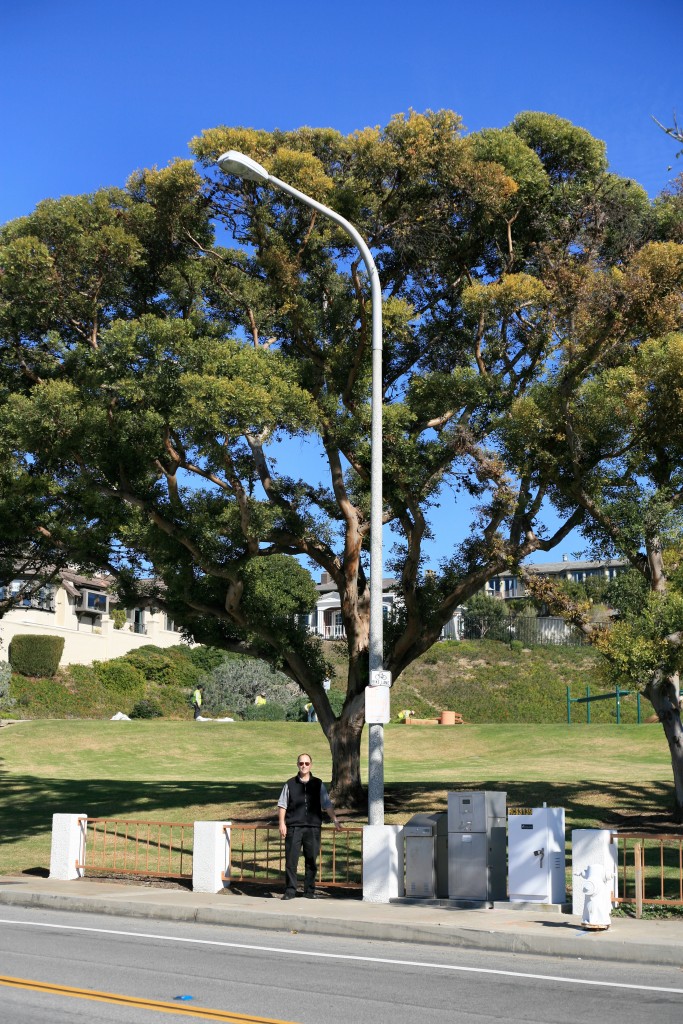
— Photo by Sara Hall ©
“We all want coverage… We all understand it. We all want it,” Horn said, “but we don’t want it where it doesn’t belong.”
Horn and other Spyglass locals also argued that the coverage maps provided weren’t up to date.
According to city documents, a wireless telecommunications facility for Verizon was approved in March. It will be built on an existing switch center building at 4302 Ford Rd., where several other cell towers from other carriers are already located.
Residents argued that the increased coverage from the Ford Road wireless facility would help fill any possible gap in the area. This definitely should have been taken into consideration when they created the coverage maps, Horn said.
Verizon responded with a letter to appeal the Planning Commission’s decision.
“The Commission’s determination is based only on anecdotal and unqualified layperson unverified statements about alleged wireless service coverage in the area,” wrote Kevin Sullivan, the lawyer representing the company for the matter, in the letter.
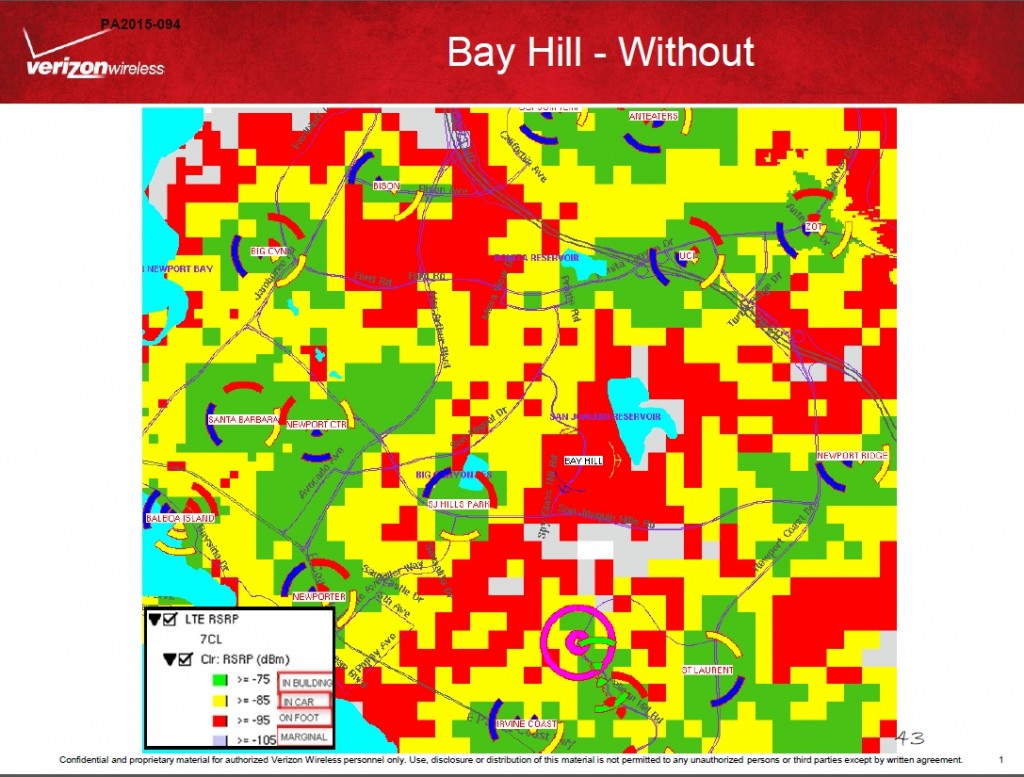
— Courtesy the city of Newport Beach
Verizon proved that there was a significant gap in coverage and capacity in the area, he explained, which included maps, data about the demands, and information from qualified experts.
Residents argued that the information provided by Verizon was misrepresented, that it would negatively affect their views and property values, in adequate outreach, and that there were better locations.
About 50 Spyglass residents attended the Planning Commission to voice their opinions.
A key point to their argument was that the illustration of the antenna box was not drawn to scale. The illustration was “completely arbitrary,” Horn said.
“They just stuck something on there to try and get it approved,” he said.
Horn used the dimensions provided by Tectonic, the Irvine-based civil engineering and surveying firm that worked on the project, to create his own illustration.
“I used their own information against them,” Horn said.
It was actually much bigger than it appeared on paper, he noted.
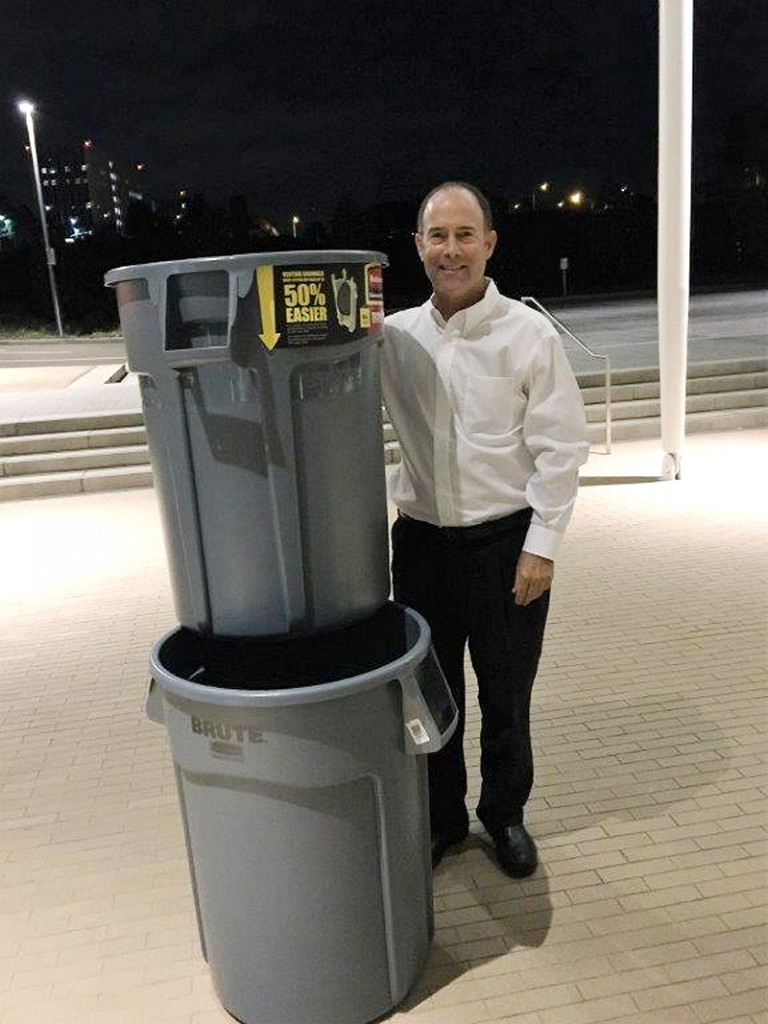
— Photo courtesy Bruce Horn ©
To demonstrate his point, Horn brought out two 44-gallon trash cans during the Planning Commission meeting and stacked them on top of each other. He said the two trash cans together are about 33 percent less area than the actual radome, a structural weatherproof enclosure that protects an antenna.
Sullivan responded for Verizon in the letter, stating that the appellants did not provide sufficient evidence about what it would look like surrounded by the existing mature trees or how it would supposedly be incompatible with the neighborhood.
Several homeowners also complained that the outreach and notification was inadequate. Horn also mentioned that during the Planning Commission meeting, Verizon representatives did not properly address the residents’ complaints.
On that point, several commissioners agreed.
“I think Verizon should have been better prepared to address the residents concerned. I also think they would have benefited from more outreach to the residents themselves to try to build consensus on an alternative location for the tower prior to the hearing.
There are other possible locations for it, Horn pointed out, including the site near San Miguel Park that they studied as a potential spot. That site would have affected less homes, he noted.
“(Spyglass Hill) is purely a residential site,” Horn noted.
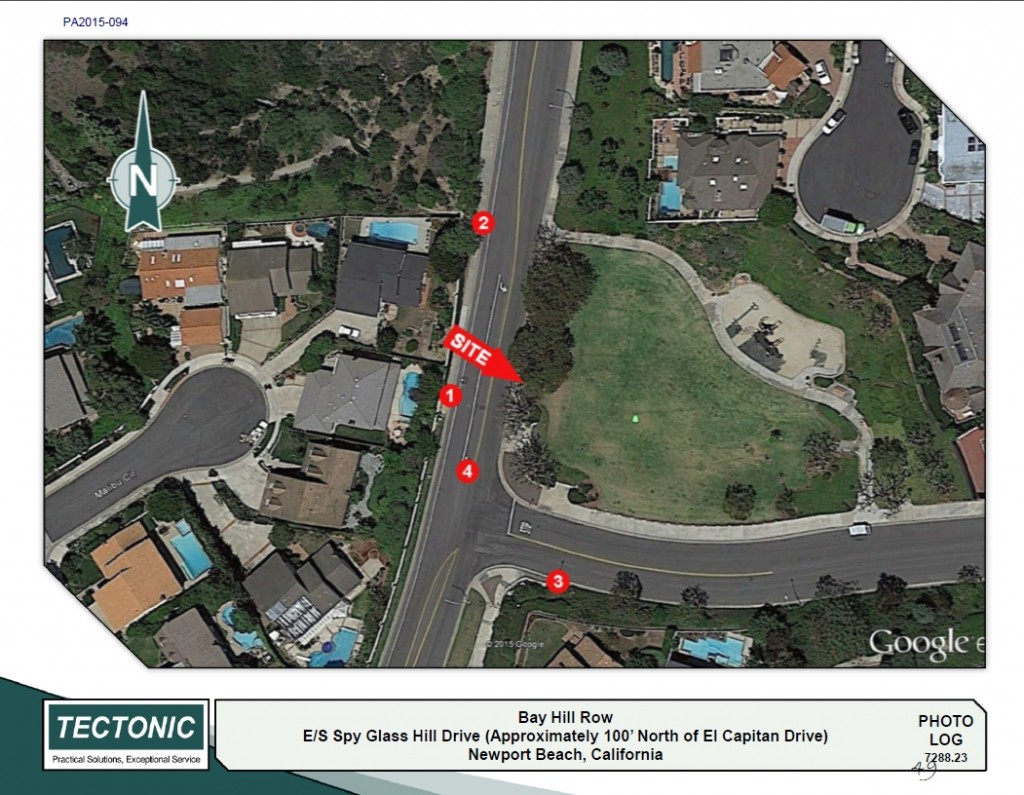
— Courtesy the city of Newport Beach
Horn personally went to every home (about 25) that could see the site to show how it affected their view.
An informal poll conducted by the resident group found that about 97 percent of the approximately 250 homeowners that participated in the survey opposed having a cell tower installed in that specific location.
But there is a bigger issue at play here, Horn said.
“It’s not about this particular,” incident, Horn said, but that cell towers in general are getting into communities where they don’t belong and residents aren’t getting all the information.
“If you don’t stay vigilant, this could end up in your backyard,” he said.
Horn feels that the large telecommunication companies are pushing into small, quiet, “sleepy” neighborhoods to try and quickly get cell towers approved without much of a fight or “raising any red flags.”
“They think they’re just going to slip into these neighborhoods and put these damn towers up,” Horn remarked. “Why is nobody talking about this?”
“This is a big, deep, dark secret,” Horn continued. “It needs to be exposed.”
A lot has changed since the Telecommunications Act of 1996, Horn said, but the law hasn’t caught up. The large wireless companies are “hiding behind” the act, he added.
“They’re doing it because they know, at some point, there is going to be proof that the radio waves (from wireless towers)… are going to be found to be a health hazard,” and that will cause the laws to change, Horn opined. “And once health becomes an issue and can be used to fight these (cell tower projects), they’re out of business.”
Verizon touched on the supposed health risks residents brought up at the meeting in their letter of appeal to the city, noting that their were “based solely on the fear of perceived radio frequency impacts and was not supported by any empirical data or credible studies.”
Many cities don’t have the resources to really vet these type of projects. Horn suggested Newport Beach create its own comprehensive plan that considers homeowner rights and cell coverage.
The process is “completely broken” and needs to be redone, he added.
“They don’t care about our homeowner rights, they don’t care about residential views,” Horn said. “All they care about is putting up another tower.”
For more information, visit platinumit.info/pit/FON, verizonwireless.com, and newportbeachca.gov.




